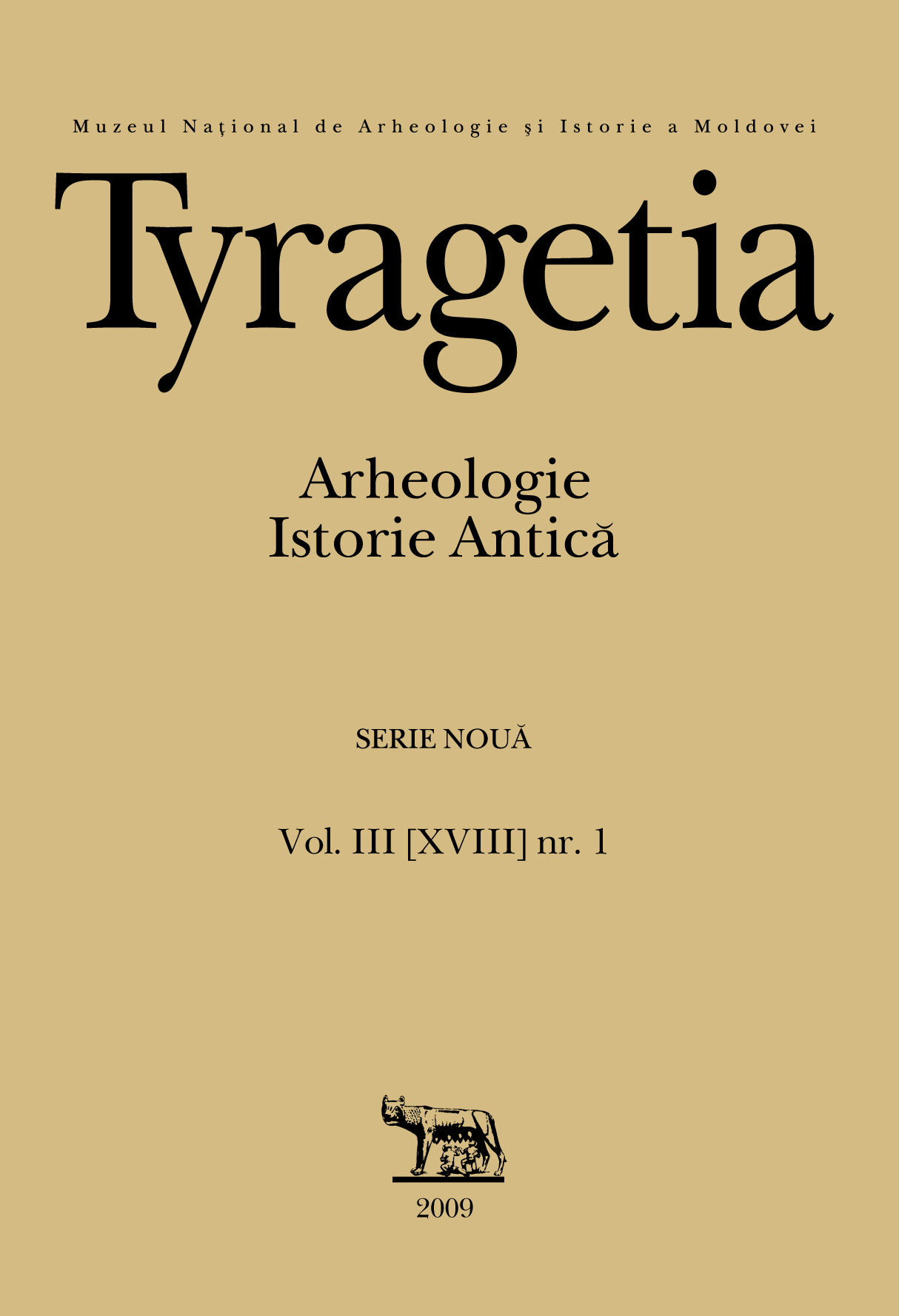Памятники типа Коржеуць в контексте истории центральной и восточной Европы раннего бронзового века
Monuments of the Corjeuţi type within the context of the Early Bronze Age History of Eastern and Central Europe
Author(s): Tatiana I. DemcencoSubject(s): Archaeology
Published by: Muzeul Naţional de Istorie a Moldovei
Keywords: early Bronze Age; tumulus; Yamnaja Culture; Corjeuţi
Summary/Abstract: As a result of excavations of the early Bronze Age tumuli located on the left Bank of the Middle Prut (villages Burlăneşti and Corjeuţi) in Moldova held in 1987-9 by the author of this article a number of monuments was unearthed which show considerable resemblance and allow their treatment as a distinctive group. The burials are found at the edges of embankments of the tumuli, the main burials of which are identified with the Yamnaja Culture and are dated to the second half – last quarter of the Ш millennium BC. The burials under consideration make use of stone constructions: circles of medium-sized limestones up to 5 m in diameter and stony platforms. There are two cases of inhumation and two cases of cremation excavated. Items of pottery found at these burials also show certain resemblances and point to technological parallelism. Two burials found at the village of Corjeuţi are particularly important. One of these was arranged in a rectangular pit, with the deceased lying on his / her right side with the head towards south / south-west. Clear traces of bronze objects which have not been preserved are visible on the wrists and phalanxes. A stone rectangular item was found at the place presumably occupied by the middle of the body. It was made out of a thin plate of grey slate, is narrowed in its central part and a hole is marked in one corner from either side. The measurements of the object are as follows: length - 9 cм, breadth 3-4,5 см, thickness - 0, 25 – 0, 8 см. The object may be interpreted as one of the famous symbols and part of a package of the Bell Beaker Culture - the wrist-guard. The Culture (resp. Phenomenon) in question existed for ca 700 years from the end of the Eneolithic period well into the Early Bronze age in wide areas of Western and Central Europe, and reached its height in the middle of the III millennium BC. It is obvious that a single object from the Corjeuţi burial does not make the site automatically belonging to this culture. However, there are further parallels which make such an attribution possible: funeral rites (biritualism, the pose of diseased, the usage of stone) and the forms of the so-called Begleitkeramik, cf. particularly the bowl on four stems. A peculiarity of the Bell Beaker Phenomenon is that it did not cover a continuous region, but consists of several distinct areas which are analysed as belonging to different provinces. According to the current views the eastern border of the Phenomenon is located by the 20º of eastern longitude, but a possibility of further finds to the east of it and therefore to the further spread of the area has been admitted (сf. Titov 1981, Heyd 2007, 101). It should be noted that a number of parallels to the Bell Beaker Phenomenon have been found on the sites of Jigodin and Roşia groups (northern Oltenia and north-western and eastern Transylvania) in neighbouring Romania. Furher conclusions – whether the monuments of the Corjeuţi type are part of the Eastern Bell Beaker province or are just reflection of it in a far periphery – will be possible only with the further excavations in the area.
Journal: Tyragetia (Serie Nouă)
- Issue Year: III/2009
- Issue No: 1
- Page Range: 9-30
- Page Count: 22
- Language: Russian

